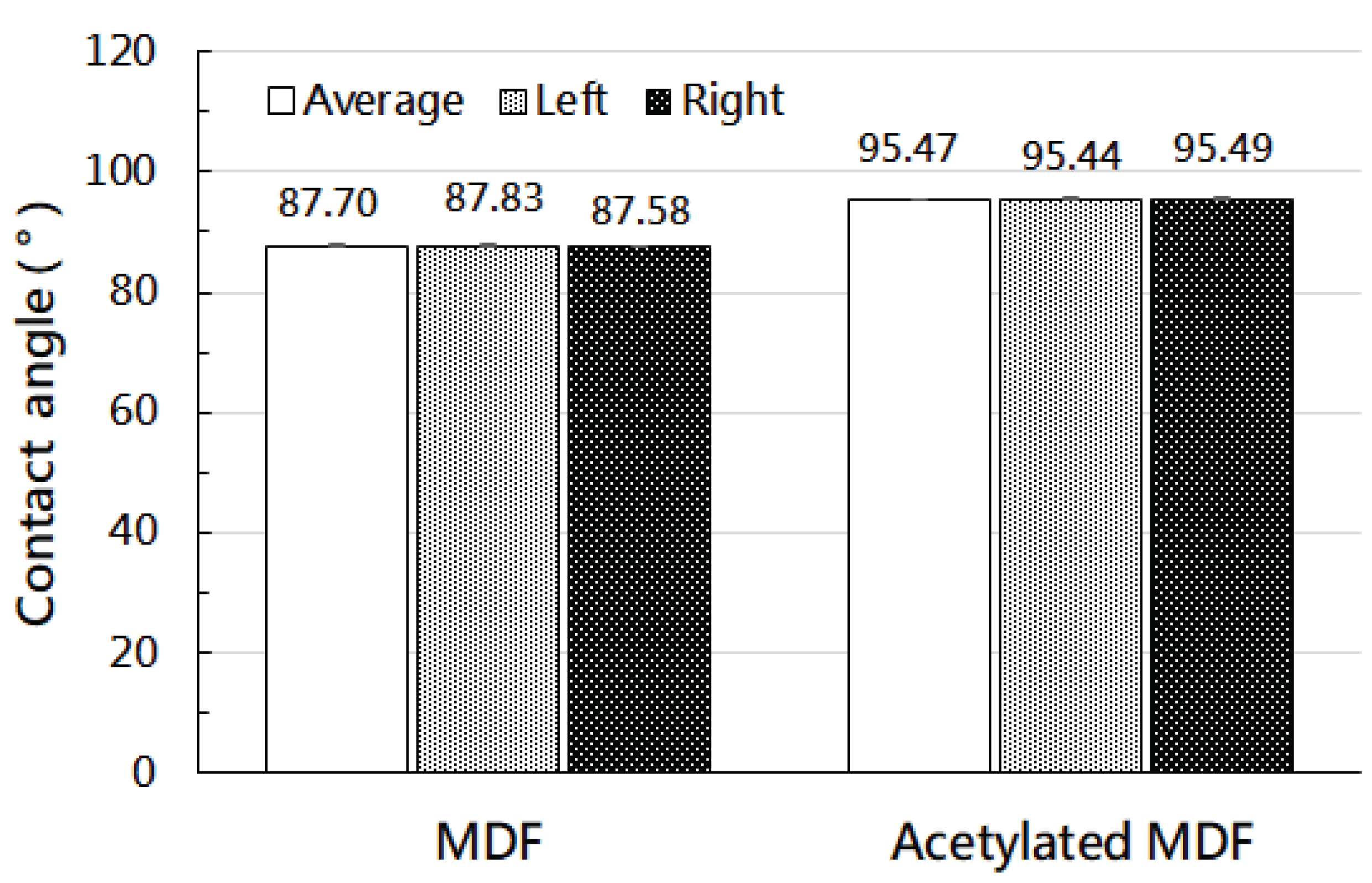1. INTRODUCTION
The dimensional changes caused by the shrinkage and swelling of the wood tissue is a major obstacle in the use of wood processing. As it is well known, the phenomenon of dimensional changes (swelling and shrinkage) in wood is caused by changes in spacing between micelles following the changes in the quantity of bound water at the moisture content region below the fiber saturation point, which leads to increase or decrease of the cell wall volume to (Lee et al., 1981). As number of studies have been conducted on the heat treatment of wood as a technique for improving the defects of wood and allowing the dimensional stability (Priadi et al., 2019; Lee and Lee, 2018), its effectiveness has been proven, and heat-treated wood for outdoor decking is being produced.
While fiber boards or particle boards having a wide surface are used for various purposes such as for furniture and interior materials, their components are wood fiber or particles. Thus, dimensional changes take place due to moisture, and the degree of the changes is more severe than in wood materials, imposing much restrictions on their uses. In particular, severe dimensional changes occur in the thickness direction. The causes for the dimensional changes include the wood’s inherent characteristics of swelling and shrinkage, as well as the spring-back phenomenon in which compressed deformation temporarily fixed during the manufacturing process of the boards recovers and swells following moisture absorption (Korai, 2012). In order to develop and expand their various usage such as wood-based boards for exterior materials, it is important to fix the defects and improve the performance of these boards, especially to provide dimensional stability in the thickness direction (Arima, 2000; Kawai, 1997). In the wood-based boards, a large swelling stress takes place locally due to the compaction of wood raw materials in the manufacturing process. What suppresses this swelling stress is the bonding force between the adhesive and the wood raw material. Boards are surfaceadhesive, and unlike plywood, where binding strength is expressed on the adhesive side, they are pointadhesive and binding strength is expressed at the adhesive points (Sekino, 2006). Thus, the boards tend to have an easy deterioration of mechanical properties compared to plywood, and the swelling rate in the thickness direction is significantly increased due to the spring-back phenomenon which occurs as the adhesive points collapse (Sekino and Okuma, 1986, Saito, 1972). For dimensional stability of boards, it is important to suppress the above two causes of dimensional changes and spring-back phenomenon (Korai, 2012). Sekino et al. (1996) classified technologies for the dimensional stability in thickness direction into five types, and Korai (2012) presented acetylation and formalization treatments as the main technology to suppress the dimensional changes among the five technologies.
It’s been known that there are two methods of chemical dimensional stabilization treatment of wood: an acetylation treatment in which a hydrophobic group (acetyl group (-CH3CO)) is introduced into a wooden cell wall, and a formalization (acetalization) that forms a crosslink between hydroxyl radicals (-OH), a hydrophilic group in the wooden cell wall. In particular, as high dimensional stability of the acetylated wood has been recognized, many studies have been conducted on achieving high dimensional stability by using acetylated wood as a raw material for manufacturing boards (Kiguchi et al., 1985, Rowell et al., 1986, 1989, 1991, 1995; Yoshida et al., 1986; Subiyanto et al., 1989). In Korea, Chung et al. (2011) evaluated the properties of bio-composites manufactured withacetylated Kenaf fibers. The effects of drying temperature and acetylation treatment on the residual amount of PEG were studied on thepine wood treated with acetylation of bamboo instruments by Kang et al. (1996) and polyethylene glycol (PEG) by Lee et al. (2015).
It is confirmed that a smaller size of the board raw material is more suitable for the acetylation treatment when manufacturing an acetylation-treated board (Imamura, 1989), and wood fiber has the optimal conditions. Currently, acetylated medium density fiberboards (MDF) are produced and distributed by company T in the Netherlands, and the product is imported and sold by company Y in Korea. While the manufacturer is posting the product performance on their websites, including material properties against moisture such as product absorbency and thickness swelling, these performances are the results of investigation according to the American Society for Testing and Materials (ASTM) D1037 method. The ASTM method is different from KS F 3200 (fiberboard) test method of Korea. Therefore, this study examined the quality performance of the acetylated MDF distributed in Korea according to the test method of KS F 3200, the domestic quality test standards.
2. MATERIALS and METHODS
The acetylated MDF was received from company Y in Incheon and used to investigate the material performance on moisture. The received acetylated MDF (14 mm thick) is a board in which the Pinus radiata fiber had been acetylated using a technology developed by company T in the Netherlands, and then bonded with a non-formaldehyde-based adhesive. This product is imported and distributed by the company Y in Korea. The average density and moisture content of the materials were 0.71 g / cm3 and 2.9%, respectively. The density was within the density range (0.35 g/cm3 or more, and 0.85 g/cm3 or less) of the medium density fiber board specified in KS F 3200 (fiberboard). In the case of moisture content, it was much lower than 5%, the minimum KS quality standard for moisture content of medium density fiberboards.
After collecting specimen of a predetermined size from the acetylated MDF according to the method specified in KS F 3200 (fiberboard), the moisture absorption and the absorption thickness swelling were investigated, and each test was performed 5 times repeatedly.
After collecting test specimen according to the method specified in KS F 3200 (fiberboard), Bending strength, internal bond, condition on screw holding were examined and wettability test was performed (Table 1).
| Conditions | Mechanical properties | |||
|---|---|---|---|---|
| Bending strength | Internal bond | Screw holding | ||
| Air dry | ○ | ○ | ○ | |
| Wet treatment | A-testa) | ○ | ○ | ○ |
| B-testb) | ○ | ○ | ○ | |
In the case of the bending strength during wetting, in the KS F 3200 fiberboard quality category, the type M (urea/melamine co-condensation resin system, equivalent or above), according to the type of adhesive used when manufacturing the fiberboard, was subjected to bending strength test A during wetting (bending strength test after soaking for 2 hours in hot water at 70 ± 3 °C and soaking again for 1 hour in room temperature water. This is referred to as wet treatment A.) and type P (phenolic resin, equivalent or above) to bending strength test B during wetting (bending strength after soaking for 2 hours in boiling water and soaking again for 1 hour in room temperature water. This is referred to as wet treatment B.). Since this study aims to evaluate the effect of improving the water resistance by the acetylation treatment of MDF, bending strengths tests during wetting both A and B were applied. For the cases of internal bond and screw holding as well, the material performance in dry condition as well as the performance after the wet treatment tests of A and B methods were investigated. The internal bond at the time of wetting was measured after conducting the wet treatment on the specimen bonded to the aluminum block for the internal bond measurement. The screw holding was measured on both the specimen’s plane and sides, and wet treatment was conducted after driving in the screw into the specimen. All tests were repeated 5 times.
In order to identify the difference in wettability between ordinary MDF without acetylation treatment and MDF with acetylation treatment, the contact angle of the water droplets falling on each board surface was measured and compared. After dropping 0.1 ml of water droplets on the surface of the specimen at a height of 1 cm according to a predetermined method, the contact angles formed on the left and right sides of the water droplets were measured immediately after the splashing caused by the drop was disappeared. For the measurement, company SEO's contact angle meter (Phoenix 150, Contact angle: 0 ~ 180 ± 0.1°, Frame: 70 frame/sec, CCD camera resolution: 640 × 480 pixels) was used (Fig. 1).
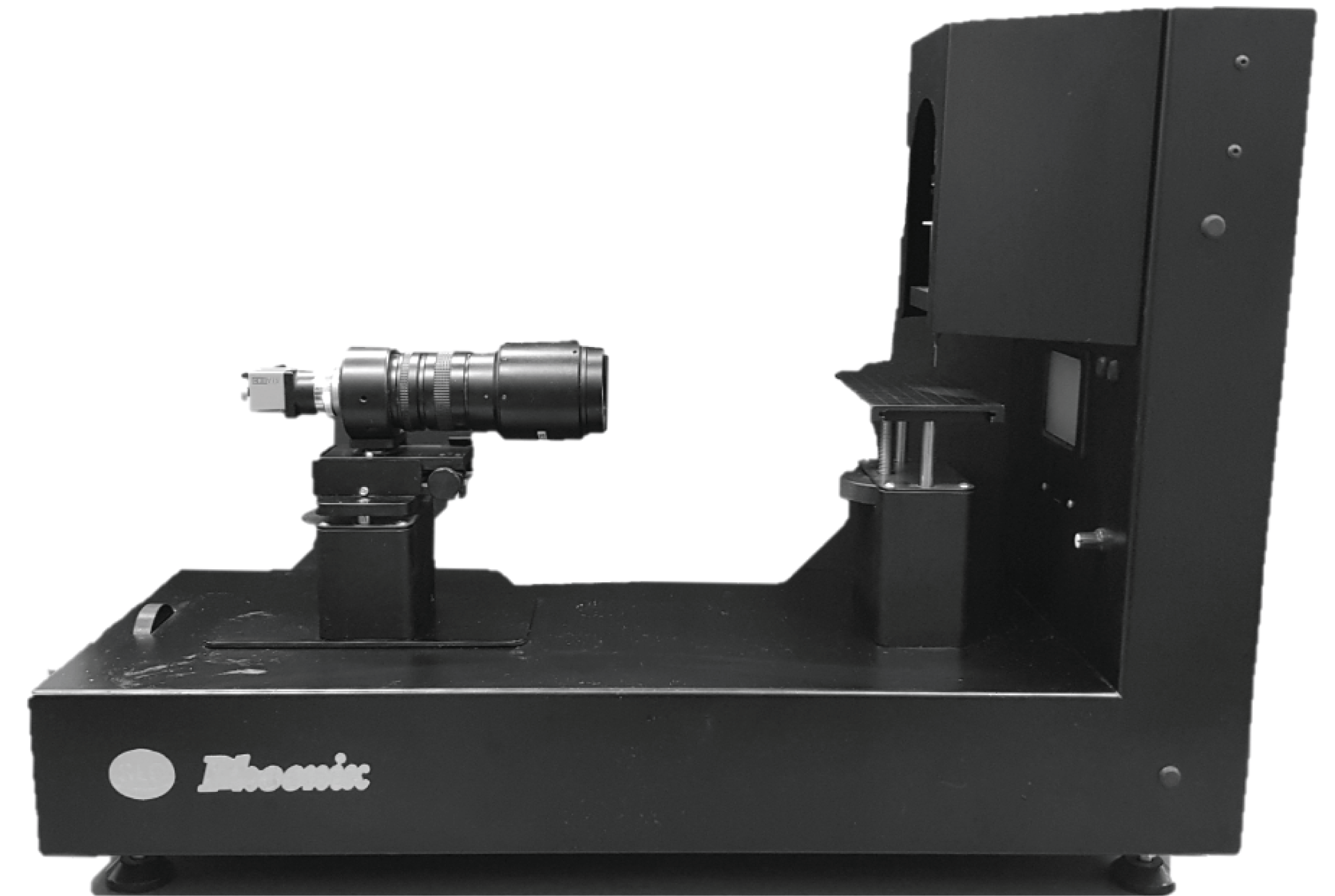
3. RESULTS and DISCUSSION
After steeping the MDF specimen in water for 24 hours according to the test method of KS F 3200, the absorption rate and thickness swelling rate were investigated by using the changes in the weight and thickness, as shown in Fig. 2. First, the average absorption rate was 5.9%, which is significantly lower than the absorption rate standards of KS F 3200 for reinforced high-density fiberboards (20% or less). For reference, there is no standard for absorption rate in the KS quality standards for medium density fiberboards. The average thickness (swelling) after absorption was 1.5% (average thickness swelling of 0.21mm), which is significantly lower than 10%, the lowest standard of KS F 3200. Thus, a high dimensional stability of the acetylated MDF on the thickness direction was confirmed.
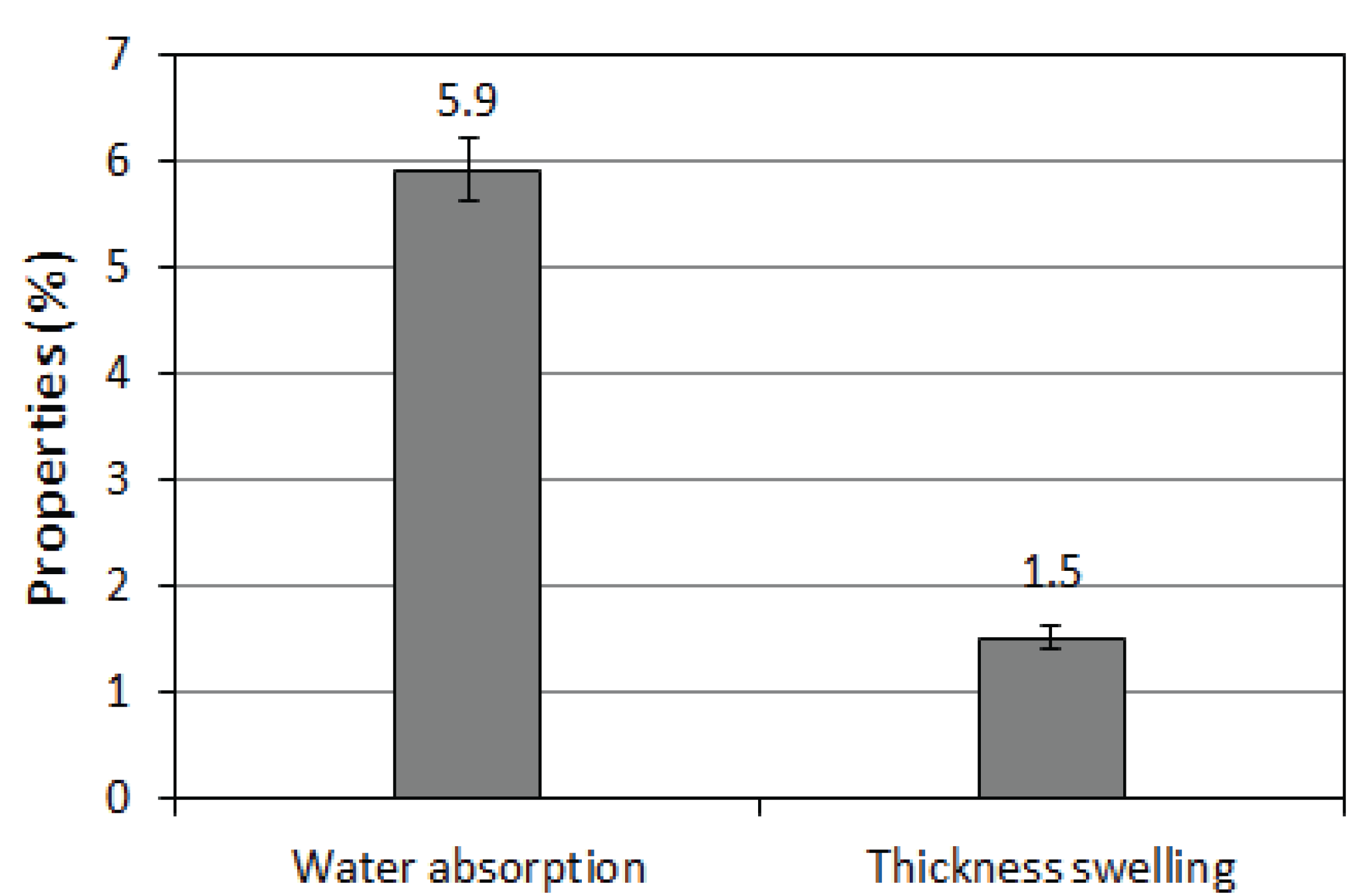
Shown in Fig. 3 are the dry condition and bending strength during wetting. The average bending strength of the acetylated MDF in dry condition was 32.9 MPa, and according to the classification of medium density fiberboards based on the bending strength specified in KS F 3200, it was equivalent to type 30.
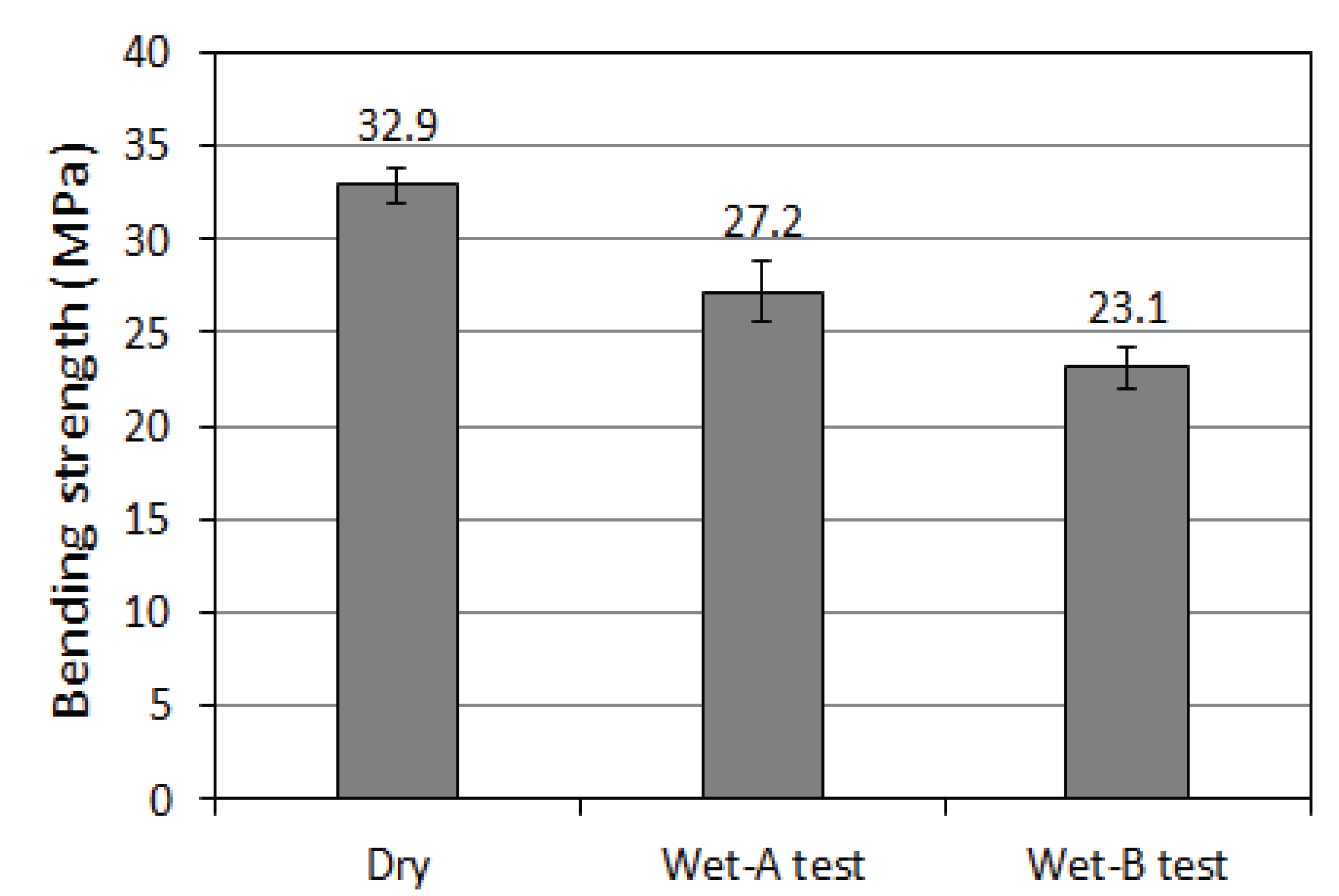
After steeping in hot water for 2 hours at temperature of 70 ± 3 °C, and then soaking in room temperature water for 1 hour, the average bending strength (A test) during wetting was measured to be 27.2 MPa. In addition, the average bending strength in test B (testing the bending strength in wetting after soaking for 2 hours in boiling water and then steeping in room temperature water for 1 hour) under the harshest conditions was 23.1 MPa, which was equivalent to maintaining approximately 70% of the bending strength in dry condition. KS F 3200 specifies the quality standards of bending strength during wetting as at least 1/2 (50%) of the bending strength in dry condition. In addition, the P-type medium-density fiberboards based on the adhesives are presented as suitable not only for furniture but also for architectural elements (floor finish, exterior wall finish, roofing, etc.). Thus, given that the acetylated MDF showed a higher bending strength during wetting than the KS quality standards, it is highly possible to be used as exterior building materials.
Shown in Fig. 4 are the internal bond in dry condition and wetting of the acetylated MDF specimen. First, the average internal bond in dry condition was 0.72 MPa, satisfying the KS' quality standards (type 30, 0.5 MPa or above). The internal bond at the time of wetting does not belong to the quality items of KS F 3200 fiberboards. However, according to the assess ment of water resistance of the acetylated MDF, a high average internal bond of 0.59 MPa was maintained even after the wet treatment test A. This is revealed to be close to 0.6MPa (type 35), the highest internal bond in dry condition provided by the KS' quality standards, which proves an excellent water resistance property of the acetylated MDF. However, the internal bond after the wet treatment test B, a harsher condition in compared to the test A, could not have been possible to be confirmed due to the deformation of the specimen.
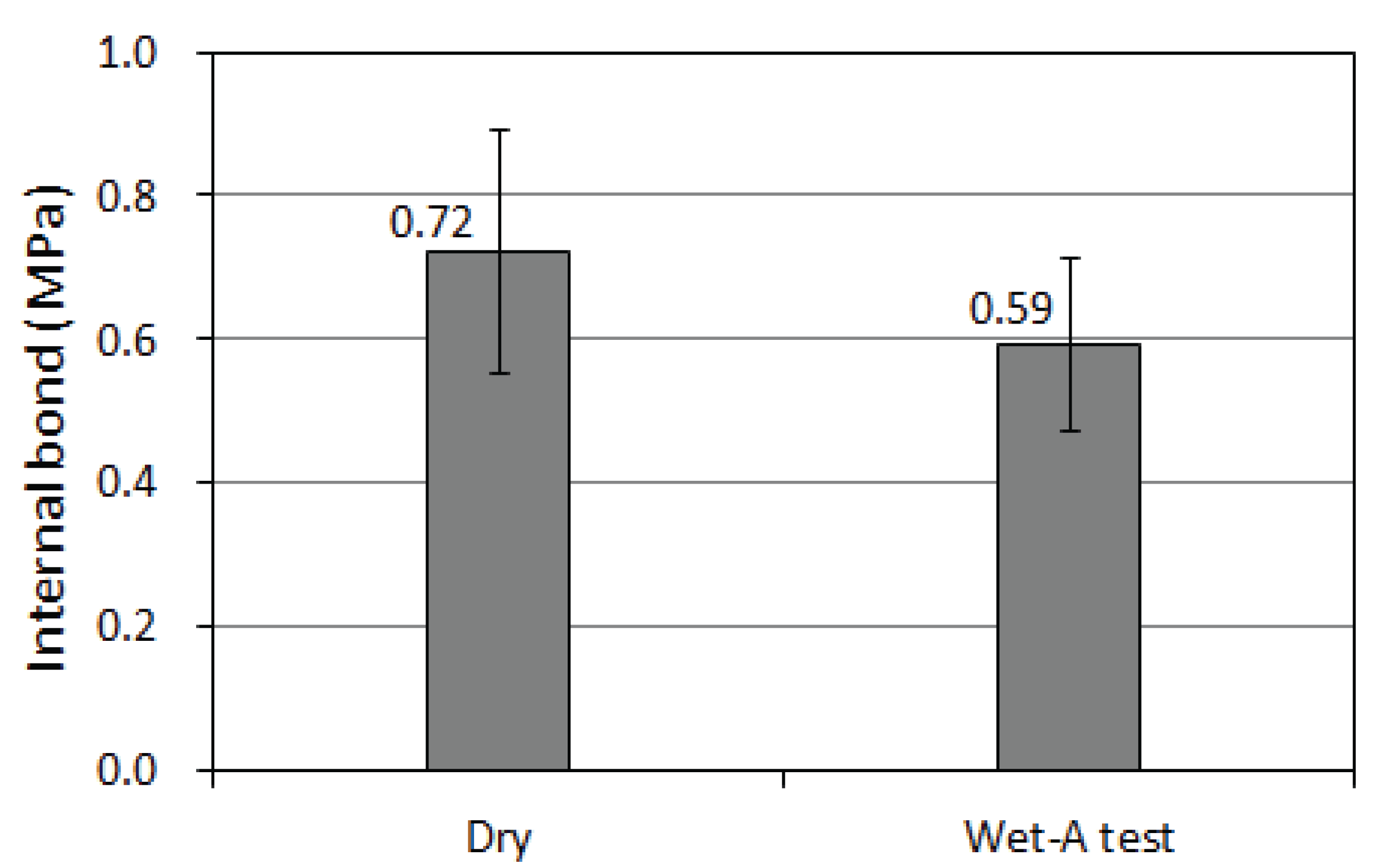
Fig. 5 shows the results of examining the screw holding on the board’s plane and sides. In the dry condition, the average screw holding on the plane surface was 482.2N, which did not meet the quality standards of KS F 3200 (30 type, equal to or above 500N). However, the average screw holding on the sides was 337.7 N, which exceeded the quality standard (30 type, equal to or above 250 N). The average holding force was maintained as 391.2 N on the plane after the wet treatment test A, but there was no screw holding maintained on the sides. After the wet treatment test B, it was impossible to measure the screw holding due to the weakening of the specimen material. Based on these results, it was revealed that the screw holding at the time of wetting process of the acetylated MDF was inferior to the bending strength or internal bond at the time of wetting process.
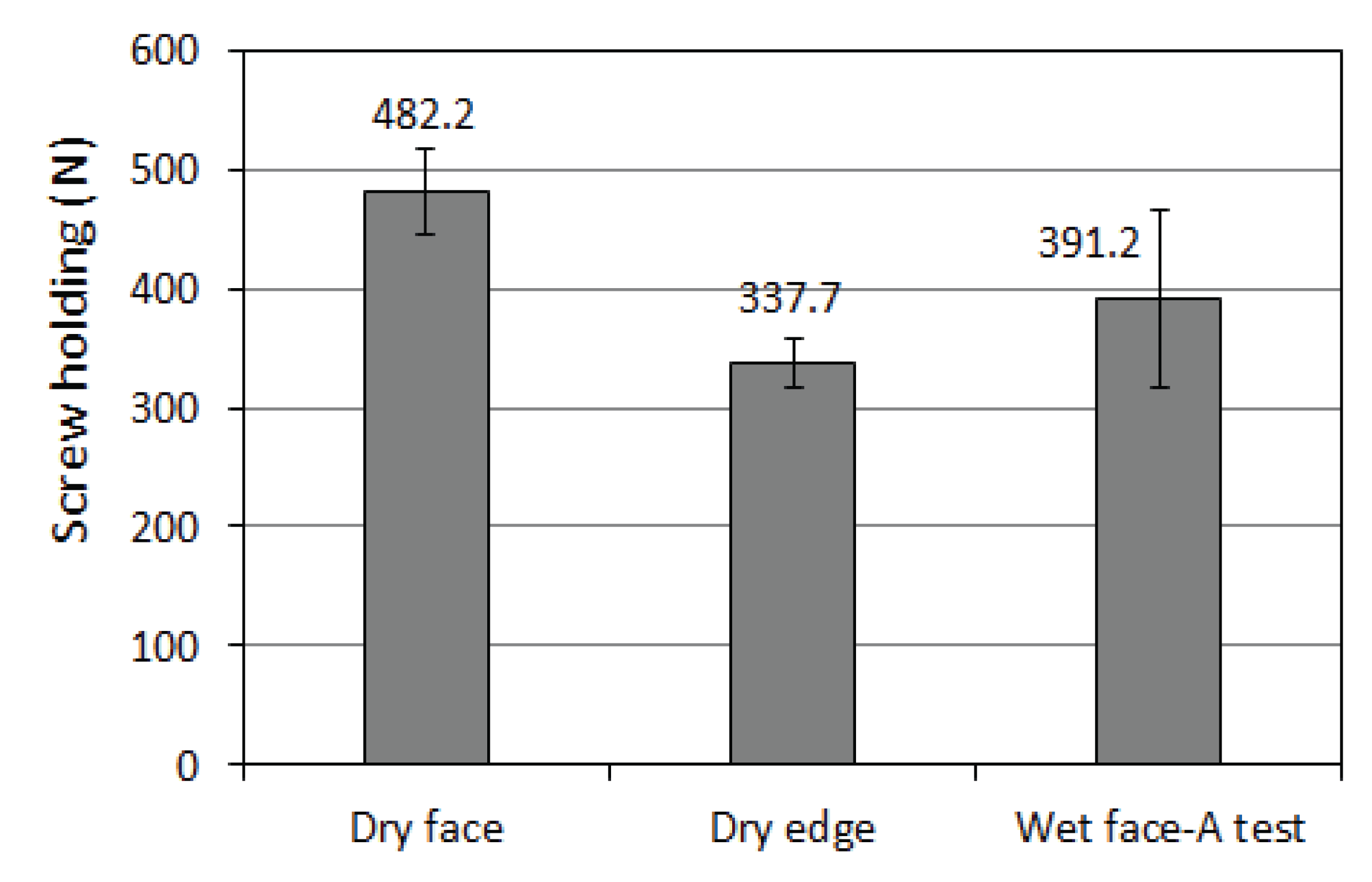
As one of the mechanisms through which liquid penetrates into wood, wettability is known as a phenomenon which determines the initial penetration. The availability of wettability in a liquid can be measured with contact angle, and the evaluation showed that the smaller the contact angle of the liquid on the wood surface, the better the wettability and the larger the poorer. In order to compare the water permeability between the non-acetylated MDF and the acetylated MDF, water droplets were dropped on the plane of the MDF according to a predetermined method, and the contact angle of the droplets formed with the surface was measured. Shown in Fig. 6 are the photographs of the shapes of water droplets falling on the planes of the non-acetylated MDF and the acetylated MDF. In can be confirmed from the angle formed by the droplets with the MDF surface, that the contact angle (B in Fig. 6) on the acetylated MDF is larger than that on the non-acetylated MDF (A in Fig. 6). To clarify this, the contact angles were measured against the plane of the MDF on the left and right sides of the droplet, as indicated by Fig. 7. The average angle between the left and right sides was 87.7° on the non-acetylated MDF, and 95.47° on the acetylated MDF, indicating a larger contact angle formed on the acetylated MDF. Using the measurements of the contact angles, Wulf et al. (1997) investigated the wetting characteristics based on the differences between the types of fiber raw materials (spruce and beech) of MDF, the presence or absence of surface polishing, and the presence or absence of water-repellent treatment using paraffin wax. The data on the contact angles formed between the water droplets and the untreated MDF that is not polished or water-repellent, regardless of the type of fiber raw material, show that the contact angles range from 75 ± 7° to 82° + 3°, indicating the contact angles of below 90°. Although it was an indirect comparison, Fig. 6 showed a larger contact angle on the acetylated MDF than that reported by Wulf et al. The above results indicate that the acetylated MDF has a poor wettability, the initial penetration mechanism of moisture, compared to the non-acetylated MDF, and this seems to have contributed in part to improving the water resistance of the acetylated MDF.
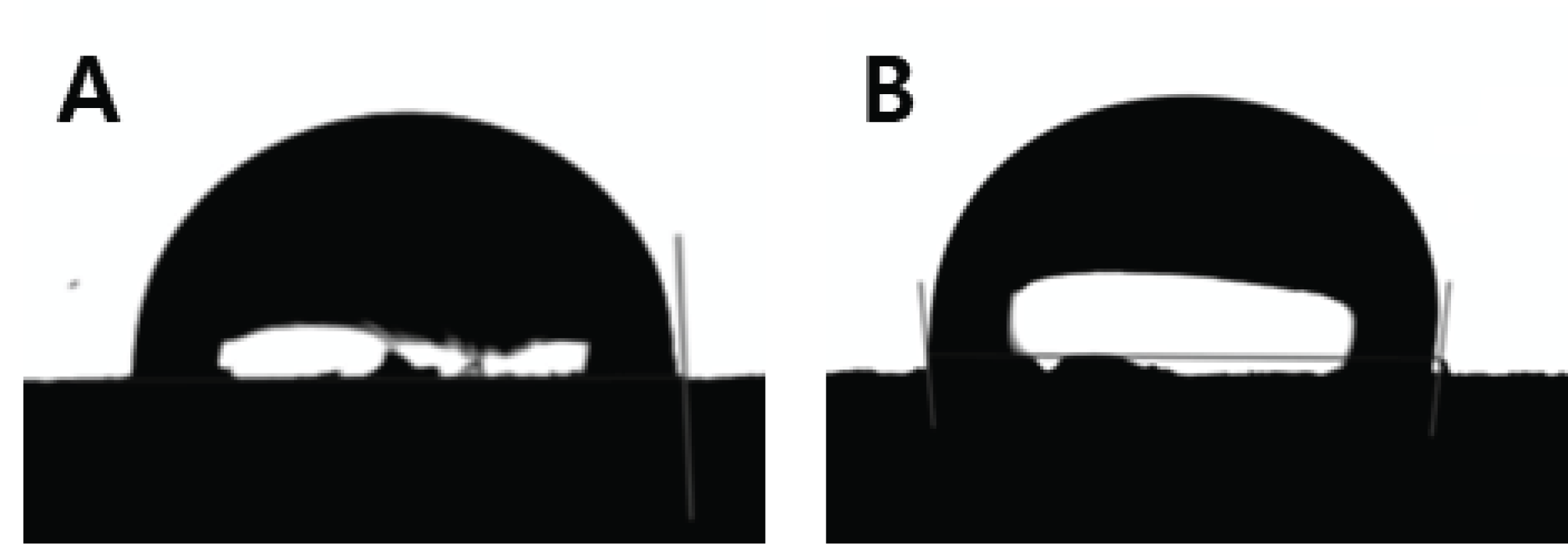
4. CONCLUSION
After investigating the material properties of MDF manufactured using acetylated radiata pine fibers against moisture, in compared to the quality standards of the medium density fiberboards of KS F 3200, the following conclusions were derived.
Since the acetylated MDF shows a very low moisture content, water absorption and thickness swelling, compared to the quality standards of MDF specified in KS F 3200, acetylation treatment is expected to improve the water resistance of the boards.
Even during the wetting process, the acetylated MDF maintains a bending strength of approximately 70% or above of the bending strength under the dry condition. Thus, it meets the KS F 3200 standards for bending strength during the wetting process.
Even during the wetting process, the acetylated MDF shows a higher quality than the internal bond under the dry condition specified in KS F 3200. Thus, it indicates a high level of water resistance.
The maintenance of screw holding of the acetylated MDF in the wet condition is relatively inferior to the bending strength or internal bond.
The contact angle of water droplets formed on the acetylated MDF is larger than that on the non-acetylated MDF. This contributes to the expression of low wettability and high water resistance of the acetylated MDF.









